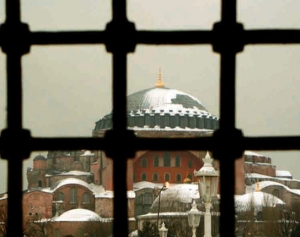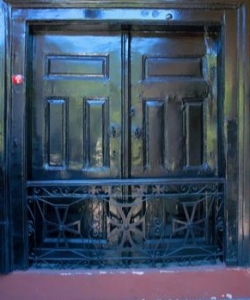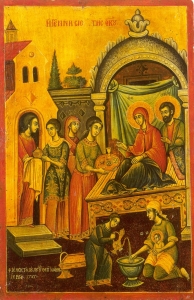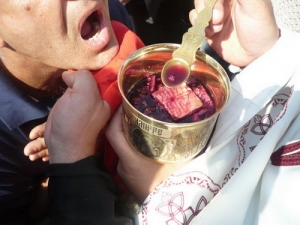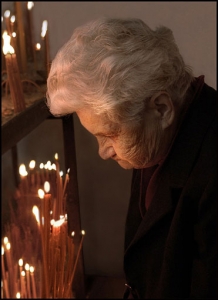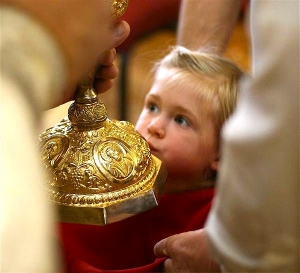
…with Faith and Love
Teach Your Children Well
You who are on the road
Must have a code that you can live by
And so become yourself
Because the past is just a good bye.
I saw this beautiful photograph and immediately thought of this song from my youth by Crosby Stills and Nash. Now that I am a grandfather, the sentiment means so much more to me than it did in the sixties. The lesson you learn as a clergy man who is privileged to offer the Body and Blood of Our Lord to the faithful is that children show if they have been taught well. How children approach the Holy Chalice says worlds about their first Church, the Church of the Home. I have heard many opinions and arguments concerning frequent communion, but none are as powerful as a child approaching the Holy Cup with love and joy. Please, don’t misunderstand me all of us, even children, will have an off day. Perhaps, they’re tired or restless or it’s just one of those days. But, you can always tell a little one who comes to Church often and receives Christ in their life often. They show the love in their hearts with their eyes.
Teach your children well…All of us parents, grandparents and Godparents should teach well. There are many of us who teach, even if we don’t have children. Yes, we are all on a road and for a short time we carry little ones, until they walk on their own. Instilling a code they can live by is our responsibility. The community of faith is all of us; and we all have a duty to pass on this faith. We live in a world that at best ignores faith. Even worse, it can ridicule and denigrate faith. We cannot teach faith only on a Sunday morning. We must live our faith each day and reflect the love of Christ in our hearts with joy. Carefully answer questions of the young putting Christ first. We have all heard the expression, “We teach by example.” The lyric says: “so become yourself,” becoming your genuine self is living in Christ each day. Do this and with God’s help, you will teach your children well!
]]>





